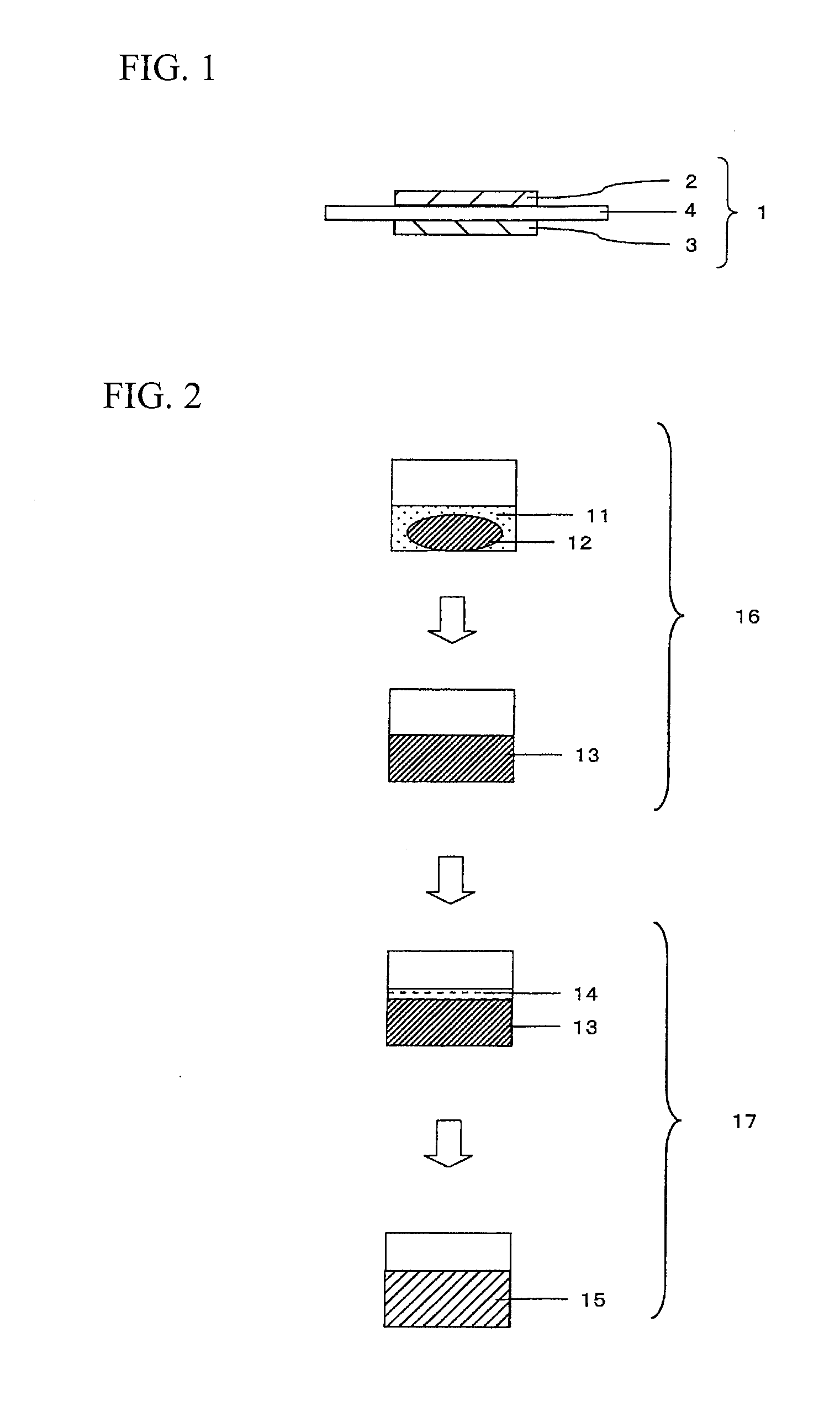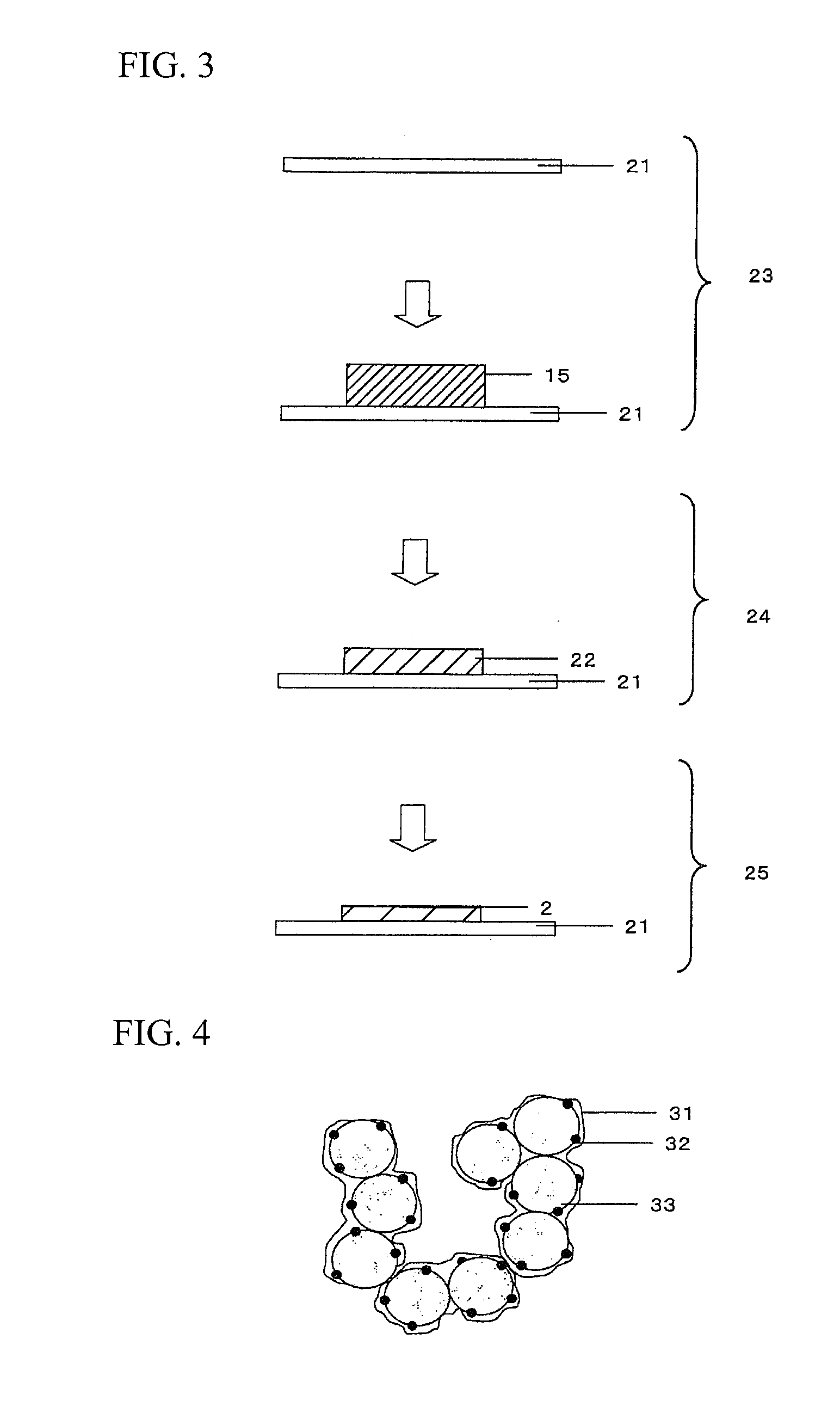Membrane electrode assembly for polymer electrolyte fuel cell, method for producing the same and polymer electrolyte fuel cell
- Summary
- Abstract
- Description
- Claims
- Application Information
AI Technical Summary
Benefits of technology
Problems solved by technology
Method used
Image
Examples
example 1
[0071]A carbon-supported platinum catalyst (Trade name: TEC10E50E, produced by Tanaka Kikinzoku Kogyo) and a mixed solvent of water and ethanol were mixed, followed by being subject to a dispersion treatment with a planetary ball mill, thereby preparing a carbon-supported catalyst dispersion. Next, a proton-exchange polymer (Nafion, trademark of Du Pont) was mixed into the carbon-supported catalyst dispersion such that the ratio of the proton-exchange polymer to the carbon support was 1, followed by being subject to a dispersion treatment with a planetary ball mill, thereby preparing a catalyst ink. Thereafter, a surface of PTFE film was coated with the prepared catalyst ink in the form of a rectangle using a slit die coater, and the PTFE film coated with the catalyst ink was subsequently placed in a warm-air oven at 70° C. and dried until tackiness of the catalyst ink was lost. Further, the PTFE film on which a half-dry catalyst layer was formed was placed in the warm-air oven at 1...
example 2
[0073]A membrane electrode assembly of Example 2 was obtained in the same manner as Example 1 except that an ultrasonic homogenizer was used in place of the planetary ball mill in the pre-dispersion step.
example 3
[0074]A membrane electrode assembly of Example 3 was obtained in the same manner as Example 1 except that an IR drying furnace in place of the warm-air oven was used in the pre-drying step.
PUM
 Login to View More
Login to View More Abstract
Description
Claims
Application Information
 Login to View More
Login to View More - R&D
- Intellectual Property
- Life Sciences
- Materials
- Tech Scout
- Unparalleled Data Quality
- Higher Quality Content
- 60% Fewer Hallucinations
Browse by: Latest US Patents, China's latest patents, Technical Efficacy Thesaurus, Application Domain, Technology Topic, Popular Technical Reports.
© 2025 PatSnap. All rights reserved.Legal|Privacy policy|Modern Slavery Act Transparency Statement|Sitemap|About US| Contact US: help@patsnap.com



